
|

|
|
Home Site Search Contact Us Subscribe
|
|
|
One-on-One: We architects are politicians: Interview with Giancarlo Mazzanti "Now is the time to think of how architecture can change the world. We architects can assume that role and make a real difference in how people live and behave." By Vladimir Belogolovsky December 13, 2011 The work of Colombian architect Giancarlo Mazzanti, whose projects succeed in improving lives of ordinary folks, reflects significant social shifts in Latin America today. It is therefore not surprising that the most fascinating architectural projects in this part of the world are social, such as schools, kindergartens, libraries, and sports arenas. Moreover, by and large the most intriguing and successful of them are built in the poorest neighborhoods. Comparing many of these humble projects with the elitist concert halls, condominiums, banks, and museums, often built as fanciful gestures wrapped in expensive skins in countries with developed economies, one begins to sense a certain decorative nature and even detachment of contemporary architecture in the West from challenges of real life. Is architecture mainly about pleasing the eye? Is it not also about trying to make our lives safer and more convenient, as well as to provide more options for such new functions, forms, and spaces that could improve qualities of our lives?
In Colombia, a country that until recently was known mainly for its violence – and still has a predominantly poor population, these questions are very central. This country is changing fast through political, social, and economic reforms. Interestingly, its politicians recognized in architecture an efficient force in solving some of its society’s social problems. Architecture is able to bring identity to various neighborhoods and create new attractive public spaces. Original and engaging buildings, plazas, and parks can transform the mindset and unify people. Sure, nothing can move forward without creating new jobs, fighting violence, reorganizing the education system, building infrastructure, solving transportation problems, and so on. But one should not underestimate the fact that the spaces in which we live, work, study, rest, and entertain play a crucial role in affecting our mood, productivity, desire for communicating with one another, or simply to dream about not what is in front of you, but beyond.
Giancarlo Mazzanti was born in 1963 in Barranquilla, an industrial port city in the north of Colombia, on the Caribbean Sea. He studied architecture at the Universidad Javeriana de Bogotá (1987), and History and Theory of Architecture and Industrial Design at the University of Florence, Italy (1991). Mazzanti has taught in Argentina, Colombia, Mexico, Panama, Peru, and the United States. His most recent built works include the Timayui Kindergarten in Santa Marta, School Flor de Campo in Cartagena, the sports complex for the 2010 South American Games in Medellín, and España Library Park also in Medellín. In 2006 the architect was awarded first prize in the Urban Design and Landscape category at the 10th Venice Architecture Biennale, and in 2008 he won the Best Work award at the 6th Ibero-American Biennial of Architecture and Urban Planning. This November the Department of Architecture and Design at the Museum of Modern Art in New York (MoMA) acquired the architect’s three architectural models of recent projects. Mazzanti is the first Colombian architect to have his work included in the museum’s collection.
Our interview took place in New York during Mazzanti’s recent participation in the Latin American Architecture Symposium at Pratt Institute School of Architecture in Brooklyn, organized by Professor Ivan Rumenov Shumkov and Latin Pratt, a student research organization founded by students Andres Chavez and Julio Martinez.
Vladimir Belogolovsky: Could you talk about your background and what first sparked your interest in architecture?
Giancarlo Mazzanti: I come from the city that has a large population of European immigrants. My mother is Colombian; my father is French from Paris. His father is Italian, and his mother is French. So I grew up in this multicultural context, speaking three languages, and my family always had an interest in the arts. After graduating from University of Florence I worked in Milan for architect Cino Zucchi for two years before coming back to Bogotá.
VB: When and how did you start your practice?
GM: It was a process. Since my graduation from university in Bogotá, I did many architectural competitions, winning my first one in 1989. It was a conceptual competition in honor of Le Corbusier for a site in Paris. Then in 1993, after coming back from Italy, I won another competition for a church in Bogotá. That was the starting point for my practice. I worked on many small, mostly interior commissions, constantly doing competitions to get more substantial projects. There were many second places, and then I won another competition, a university building in Cali.
VB: What portion of your projects is done through competitions, and are competitions a norm for awarding public works in Colombia?
GM: All my main built works are done through competitions, and it is very typical in Colombia now. In fact, there is a law that requires all public works to be done through competitions. This consistently creates new opportunities for young architects and for architecture overall. Competition is the only option in architecture for producing real breakthroughs, because when you’re hired you’re normally told what to do. But with competitions you make your own decisions. Now I am beginning to get commissions as well. For example, I was invited to work on a social housing project in Madrid.
VB: What kind of project is that?
GM: It is an unusual project because it will be in a neighborhood predominantly populated by immigrants from Latin America. This project has to make them feel familiar with their own customs. It is great research for me, and I try to explore new ways that would promote communication within the complex.
VB: You teach architecture. Do you have a particular approach to teaching?
GM: I currently teach at Universidad de los Andes in Bogotá. I focus on two main approaches in architecture. One is on how architects can be active and initiate ideas and projects. And the other is on how to achieve physical intervention – with research not only in materials and construction techniques, but on questioning, such as: How can a building stimulate a particular behavior or how can it generate a certain interest? Form is always secondary. It is a response to primary concerns, such as the intended purpose of a particular space or a budget. And if we can rethink and enrich a particular function or use, it will inevitably lead to new forms, materials, and so on. I also always insist on architecture to be open and incomplete. This way it is more likely to adapt to future changes and functions that are hard to predict because our society is constantly learning and changing. Architecture should never be finished. I typically work with my students on projects similar to those I work on in my practice.
VB: Tell me about your office in Bogotá.
GM: We have about 20 architects. It is a medium size office in Colombia. But the size does not limit me in any way because I often collaborate on projects with architects outside of my practice. Over the last 20 years I’ve collaborated with 37 architects. We have an open collaboration and we made many associations with architects and other professionals, such as philosophers, sociologists, biologists – and not just in Colombia but all over the world.
VB: Why is that? How does this enrich your work?
GM: Because it makes our practice a much more interesting and open place to work. This is our strategy. It provides many more opportunities and enables us to work on many more types of projects than we could have possibly worked on by ourselves. Often we form an association before there is even a project. We have relationships that help us to find projects and then collaborate on them. For example, I am planning to work on projects with Steven Holl and Bjarke Ingels. It is an open practice. When we have more work than we can handle, or when we feel the work can be stronger with the involvement of a particular architect, we call our associates to collaborate.
VB: What projects are you working on at the moment?
GM: There is a museum of modern art in the north of Colombia, which we won through a competition; two kindergartens, also won in competitions; one housing project for seniors; a hospital; a social housing project in Madrid; and a private house.
VB: Sergio Fajardo was the mayor of Medellín from 2003 to 2007. He became an internationally well-known politician who used architecture to change the skin of his city by erecting the most beautiful buildings in the poorest neighborhoods. I read that he came to your office and asked you to collaborate. This is something very unusual here. Could you talk about architecture as politics in Colombia?
GM: Well, architecture in Colombia is politics. We architects think of ourselves as politicians. We work very closely with our local governments on coming up with strategies for improving communities. The mayor of Medellín came to our office after we won the library competition there.
VB: You once said: “I’m passionate about adapting architecture to make it capable of changing behavior.” Could you give examples in which your projects made such attempts?
GM: I think this is the most urgent problem in architecture today. How to make a difference with architecture? Previous generations of architects thought of how architecture could interpret the world, but I think now is the time to think of how architecture can change the world. We architects can assume that role and make a real difference in how people live and behave.
VB: Could you elaborate on how this can be achieved?
GM: First, by introducing social inclusion and opening new possibilities for communal interaction. Forms alone can’t change anything. People need to be engaged with one another. A good example is the work of Cedric Price whose projects, such as Fun Palace, were beyond aesthetics. They advocated the role of architecture for nurturing social development and they were flexible, indeterminate, and open-ended. In our architecture we try to offer opportunities for interactive learning and leisure. So it is no longer about the look and the forms.
VB: But isn’t it precisely the forms and the iconic image that the mayor wanted the architects to give him? The form and ultimately the image is still the driving force of architecture, isn’t it? What changed is how we get to these forms. And in the process they are getting more and more exuberant. The fact that these forms are based on new social agendas and new functions makes them more rational, calculated, and attractive, but it is still the look that attracts, right?
GM: Sure, the image is very important, but the discussion is no longer about the image only. It is about how these forms can make real changes in the lives of real people. It is not a problem to make a building beautiful. The real issue is how to make buildings that can be appropriated by people. Beauty is relevant. But everybody can appreciate buildings that provide social inclusion.
VB: So without knowing what your housing project in Madrid is going to look like, could you talk about the examples of social inclusion there?
GM: For example, many immigrants who are going to live there are coming from agricultural backgrounds. So our building will have urban farms. It will also have a gym, a bicycle lane going through the building, a theater, and many other activities and public spaces to promote interaction and communication.
VB: You named Cedric Price as one of the originators of social inclusion ideas. What other designers or sociologists could you mention who deserve the credit for this new thinking about the role of architecture as a social and experiential tool?
GM: These ideas are coming from philosophers and sociologists, such as French sociologist Bruno Latour. I am interested in the work of Rem Koolhaas and his ideas of inventing new functions and possibilities, and developing projects with multiple and transformative functions. I love the text “The Architect of Modern Life” in OMA - Rem Koolhaas: Architecture 1970-1990 by Jacques Lucan. Artist Olafur Eliasson’s works are very influential. They focus on the importance of atmosphere, temperature, color, and such on our perception of space and behavior in relation to space. I am now collaborating with Colombian artist Nicolas Paris who is using art as a laboratory and a learning tool. In my own work I am trying not just to construct educational spaces, where a class takes place, but to make space itself that is pedagogical. In other words, the space can encourage the learning process. I am interested in such architecture that encourages people to wonder and to act.
VB: Could you point out such particular examples in your work?
GM: In my school project Colegio Gerardo Molina, in Bogotá, I used many residual spaces to explore and promote learning by introducing different materials and colors, creating new identities and interests for various spaces. I think it is just as important to create interesting spaces not just for the classrooms, but for the voids in between. You learn science and literature in the classrooms but you learn about relationships and how to interact with the community after class, in these residual spaces. There is a whole other capacity for learning. This method really works, and we are now designing three other schools based on these ideas. What is also the key is that we are building them in the poorest neighborhoods.
VB: Let’s dream a little. If you were the next mayor of your city, what project would you want to realize the most?
GM: I would realize two projects. One would connect our city parks to the surrounding mountains, which are beautiful and not used as part of the city. The second project would be a series of small interactive spaces and installations in poor parts of the city, which should encourage curiosity. They could also be used by local musical bands to add to the identity of various neighborhoods.
Vladimir Belogolovsky, founder of the New York City-based Intercontinental Curatorial Project Inc., organizes, curates, and designs architectural exhibitions worldwide. Trained as an architect at Cooper Union, he has published more than 100 articles in American, European, and Russian publications, and is the American correspondent for the Russian architectural journals Architecturny Vestnik, SPEECH, and TATLIN. He has authored several books, including Felix Novikov for the series Masters of Soviet Architecture, and Green House on leading sustainable projects. His book Soviet Modernism: 1955-1985, written with architect Felix Novikov, was released in October 2010. He is currently working on a book, Harry Seidler (Rizzoli) to be released in Fall 2013, and is curating a Harry Seidler traveling exhibition to go to Riga, Tallinn, Paris, Houston, North Carolina, and Sydney from 2012 to 2014. He can be reached at vbelogolovsky@gmail.com.
Also by Vladimir Belogolovsky
One-on-One: Architecture that leads to a point: Interview with Daniel Libeskind "Every building, every city should have a story."
One-on-One: Architecture of Emotion and Place: Interview with Bartholomew Voorsanger, FAIA, MAIBC The architect's aspiration to create expressive, dynamic spaces is absolutely the key to his work.
One-on-One: Architecture as a Social
Instrument: Interview with Bjarke Ingels of BIG
One-on-One: Putting Colors Together: An
Interview with Will Alsop
One-on-One: The Art of Ennobling
Communities: Interview with Sara Caples and Everardo Jefferson
One on One: Elusive Architecture:
Interview with Kengo Kuma
|
(click on pictures to enlarge) 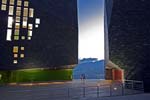 ©Sergio Gomez España Library Park, Medellín, Colombia 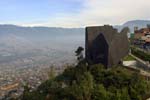 ©Sergio Gomez España Library Park  ©Sergio Gomez España Library Park  ©Sergio Gomez España Library Park interior 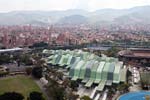 ©Iwan Baan Sports Complex for the 2010 South American Games, Medellín, Colombia 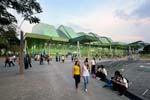 ©Iwan Baan Sports Complex for the 2010 South American Games 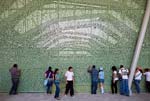 ©Iwan Baan Sports Complex for the 2010 South American Games 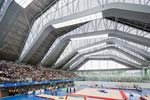 ©Iwan Baan Sports Complex for the 2010 South American Games 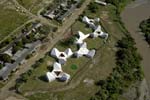 ©Jorge Gamboa Timayui Kindergarten, Santa Marta, Colombia  ©Jorge Gamboa Timayui Kindergarten 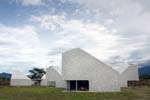 ©Jorge Gamboa Timayui Kindergarten 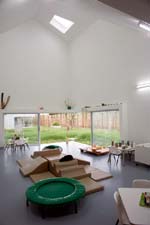 ©Jorge Gamboa Timayui Kindergarten 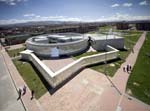 ©Rodrigo Davila El Porvenir Kindergarten, Bogotá, Colombia 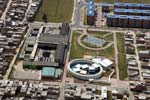 ©F. Rodolf El Porvenir Kindergarten  ©Iwan Baan El Porvenir Kindergarten 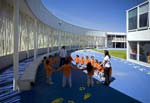 ©Rodrigo Davila El Porvenir Kindergarten  ©Giancarlo Mazzanti Flor de Campo School, Cartagena, Colombia 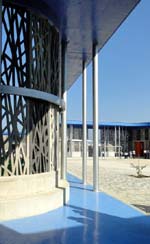 ©Giancarlo Mazzanti Flor de Campo School, Cartagena, Colombia 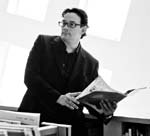 Felipe Correa Giancarlo Mazzanti |
© 2011 ArchNewsNow.com